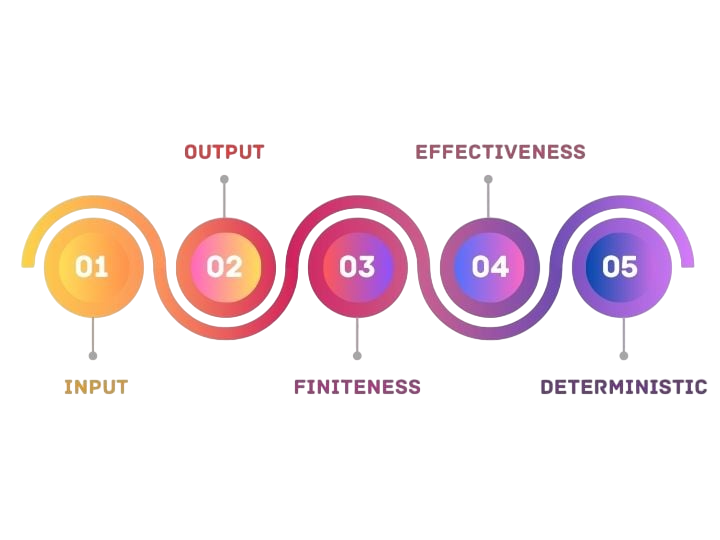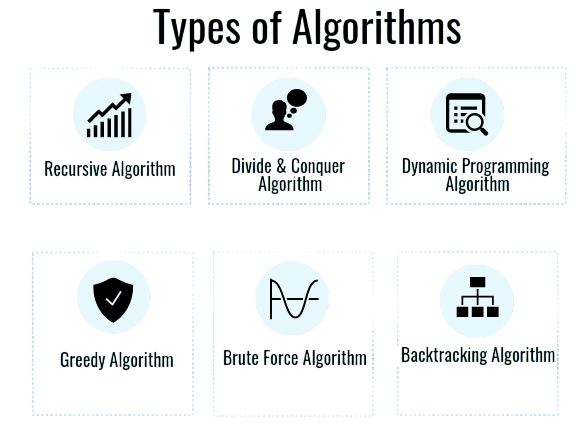
- What is an Algorithm?
- Definition and Importance
- Properties of a Good Algorithm
- Representing Algorithms (Pseudocode and Flowchart)
- Time and Space Complexity
- Common Algorithm Types
- Basic Algorithm Examples (Sorting and Search)
- Recursive Algorithms
- Conclusion
What is an Algorithm?
An algorithm, at its core, is a step-by-step, well-defined sequence of instructions designed to solve a problem or perform a task. The term comes from the name of the Persian mathematician Al-Khwarizmi, whose works on mathematics introduced systematic problem-solving methods. In computing, algorithms are essential because they act as the underlying logic for every software program, whether it’s sorting a list, encrypting data, or navigating GPS routes. Without algorithms, computers would not be able to process inputs, perform calculations, or produce meaningful outputs. They provide a structured way to approach problems Java Training, ensuring that solutions are both correct and efficient. In the modern digital world, algorithms power everything from search engines and recommendation systems to artificial intelligence and data analysis.An algorithm is a step-by-step set of instructions or rules designed to solve a specific problem or perform a particular task. It acts as a clear and logical procedure that takes input, processes it, and produces the desired output. Algorithms are fundamental to computer science and programming, enabling efficient problem-solving and automation. They can be simple, like a recipe, or complex, like sorting large datasets. Good algorithms are efficient, correct, and easy to understand. They form the basis of software development, influencing performance and resource usage in applications.
To Earn Your Java Training Certification, Gain Insights From Leading Web Developer Experts And Advance Your Career With ACTE’s Java Training Today!
Definition and Importance
In the simplest terms, an algorithm can be defined as a finite set of unambiguous instructions that, when followed, accomplish a specific task or solve a particular problem. The importance of algorithms cannot be overstated, as they are the foundation of computer programming and software engineering. Every application, from the smallest mobile app to the largest distributed system, relies on algorithms to function correctly. They ensure that tasks are performed logically, accurately, and efficiently, helping developers manage complexity in software systems. The efficiency of an algorithm often determines the performance of a program. An inefficient algorithm can slow down execution, increase resource consumption, and negatively impact user experience What Is the Java API . In industries like finance, healthcare, logistics, and entertainment, well-designed algorithms directly influence competitiveness, accuracy, and cost-effectiveness. Thus, understanding and designing algorithms is a critical skill for any programmer or computer scientist. An algorithm is a precise sequence of steps or instructions designed to solve a problem or perform a task. It provides a clear and systematic approach to processing data and achieving desired results. Algorithms are essential in computer science as they form the backbone of all software applications. Their importance lies in improving efficiency, accuracy, and consistency when solving problems. Well-designed algorithms optimize resource use, reduce execution time, and enhance overall system performance. Understanding algorithms helps developers create faster, more reliable, and scalable solutions, making them critical for innovation and technology advancement.
Properties of a Good Algorithm
- Correctness: Produces the correct and expected output for all valid inputs.
- Finiteness: Must terminate after a finite number of steps, not run indefinitely.
- Input: Has zero or more well-defined inputs to work on.
- Output: Generates one or more outputs as a result of its processing Reverse a String in Java .
- Definiteness: Each step is clearly and unambiguously defined.
- Efficiency: Uses minimal resources (time and memory) while executing.
- Generality: Should be applicable to a broad set of problems, not just specific cases.
- Sorting Algorithms: Organize data in a specific order (e.g., Bubble Sort, Merge Sort, Quick Sort).
- Searching Algorithms: Find an element within a data set (e.g., Linear Search, Binary Search).
- Factorial Calculation: Throw and Throws Java Computes the factorial of a number using iterative or recursive methods.
- Fibonacci Sequence: Generates numbers where each is the sum of the two preceding ones.
- Greatest Common Divisor (GCD): Finds the largest number dividing two integers without a remainder (Euclidean algorithm).
- Palindrome Check: Determines if a string reads the same forward and backward.

Would You Like to Know More About Java Training? Sign Up For Our Java Training Now!
Representing Algorithms (Pseudocode and Flowchart)
Algorithms can be represented in various ways to aid understanding, planning, and communication. One of the most common methods is pseudocode, which expresses the steps of an algorithm in a structured, language-agnostic format that resembles programming languages but is meant for human reading rather than machine execution. Pseudocode helps programmers and non-programmers alike understand the logic before diving into code. Another popular representation is the flowchart, which uses standardized symbols like ovals for start/end, rectangles for processes, diamonds for decisions, and arrows for flow direction. Flowcharts visually depict the flow of control in an algorithm, making it easier to spot logical issues and improve clarity Java Training. While pseudocode is better for textual representation and direct conversion into code, flowcharts excel at showing the logical flow and decision-making paths, especially in complex algorithms. Algorithms can be represented in different ways to improve understanding and communication. Pseudocode is a simple, human-readable description of the algorithm’s steps using structured language that resembles programming but without strict syntax. It helps developers plan and design algorithms before coding. Flowcharts use standardized symbols and arrows to visually depict the flow of operations, decisions, and processes in an algorithm. This graphical representation makes complex logic easier to grasp and follow. Both pseudocode and flowcharts are essential tools for documenting, analyzing, and sharing algorithms effectively.
Time and Space Complexity
An algorithm’s performance is often measured in terms of time complexity and space complexity. Time and Space Complexity refers to the amount of computational time an algorithm requires to complete as a function of the size of its input, usually expressed using Big O notation (e.g., O(n), O(log n), O(n²)). It helps in understanding how an algorithm will scale when dealing with larger inputs. Socket Programming in Java Space complexity, on the other hand, measures the amount of memory space the algorithm requires during execution, including variables, data structures, and function call overhead. Both metrics are crucial in evaluating an algorithm because a fast but memory-hungry algorithm might not be suitable for devices with limited resources, while a memory-efficient algorithm that takes too long to execute might not meet performance requirements. Striking the right balance is often the challenge for algorithm designers.
Are You Interested in Learning More About Java Training? Sign Up For Our Java Training Today!
Common Algorithm Types
Algorithms can be classified into different categories based on their design and purpose. Sorting algorithms, such as Bubble Sort, Merge Sort, and Quick Sort, arrange data in a particular order, typically ascending or descending. Searching algorithms, like Linear Search and Binary Search, help locate specific elements within a dataset. Graph algorithms, such as Dijkstra’s Algorithm Backend Development or Depth-First Search, are used to traverse and find paths in graph structures.

Greedy algorithms make the locally optimal choice at each step, aiming for a global optimum, as seen in Kruskal’s and Prim’s algorithms for minimum spanning trees. Divide and conquer algorithms break problems into smaller subproblems, solve them individually, and combine results, such as in Merge Sort. Dynamic programming algorithms optimize problems by storing solutions to subproblems, preventing redundant calculations. Understanding these types allows developers to choose the most suitable one for their specific use case.
Basic Algorithm Examples (Sorting and Search)
Preparing for Java Job Interviews? Have a Look at Our Blog on Java Training Interview Questions and Answers To Ace Your Interview!
Recursive Algorithms
A recursive algorithm is one that calls itself to solve smaller instances of the same problem until reaching a base case that terminates the recursion. Recursion is a powerful concept used in problems like factorial computation, Fibonacci sequence generation, and tree traversals. While recursion can simplify code and make it more readable, it can also introduce overhead due to repeated function calls and stack usage. For example, calculating Fibonacci numbers recursively without optimization results in exponential time complexity (O(2^n)), but applying memoization a technique from dynamic programming—can reduce it to O(n). Understanding when and how to use recursion effectively is key, as it can lead to elegant solutions but also performance pitfalls Java Serialization if misapplied.A recursive algorithm solves a problem by breaking it down into smaller instances of the same problem, calling itself with these smaller inputs. It typically has a base case that stops the recursion, preventing infinite loops. Recursive methods are elegant and simplify complex problems like factorial calculation, Fibonacci sequences, and tree traversals. However, recursion can sometimes be less efficient due to repeated computations and additional memory use for call stacks. Properly designed recursive algorithms are powerful tools for solving problems that have natural recursive structures or can be divided into similar subproblems.
Conclusion
Algorithms are the heart and brain of computing, transforming raw data into actionable results through systematic problem-solving. From simple sorting routines to advanced machine learning algorithms, they underpin nearly every technological advancement in the modern world. Understanding algorithms not only enables developers to write better code but also equips them with the tools to Java Training analyze problems, design efficient solutions, and adapt to emerging challenges. As technology continues to evolve, the demand for algorithmic thinking will remain constant, making it an indispensable skill for programmers, engineers, and data scientists alike. Mastering algorithms is not a one-time task but an ongoing journey of learning, practice, and refinement.





